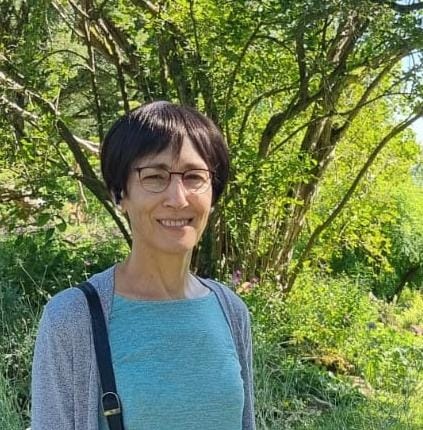Einladung zum IPN-Kolloquium: „Natural Language Processing as a Diagnostic Tool in Evolution Education“ mit Dr. Merav Siani vom Herzog Academic College in Alon Shvut, Israel

Die Abteilung Didaktik der Biologie freut sich, Dr. Merav Siani vom Herzog Academic College in Alon Shvut (Israel) im August am IPN begrüßen zu dürfen.
In einem Vortrag am 21. August stellt sie vor, wie Methoden des Natural Language Processing (NLP) eingesetzt werden können, um Schülerantworten zum Thema Evolution zu analysieren. Die zugrunde liegende Studie basiert auf der Auswertung von rund 1200 offenen Antworten von Zwölftklässler*innen. Mit dem Einsatz von NLP konnten zentrale konzeptionelle Schwierigkeiten in der Begründung und Evidenzführung identifiziert und für eine formative Diagnostik nutzbar gemacht werden.
Der Vortrag wird in englischer Sprache gehalten und richtet sich an alle Interessierten aus Wissenschaft, Lehrkräftebildung und Bildungspraxis.
Das Wichtigste in Kürze
Donnerstag, 21. August 2025, 10:00 Uhr
Hörsaal des IPN, Olshausenstraße 62, Kiel
Hybrid-Teilnahme möglich unter: https://mediaportal01.rz.uni-kiel.de/b/vos-6dj-xlh-bqh
Zum Abstract...
Interview mit Dr. Merav Siani
Im Vorfeld des Vortrags haben wir mit Merav Siani gesprochen, um mehr über ihre Forschung und den Anlass ihres Aufenthalts am IPN zu erfahren.
IPN: What is the purpose of visit to the IPN in Kiel?
Siani: The research dealing with the use of automated analysis tools for formative assessment was conducted within the framework of a collaborative project led by Prof. Anat Yarden and Dr. Giora Alexandron, with additional partners, all from the Department of Science Teaching at the Weizmann Institute of Science. The collaboration and combined expertise of all project members, in science education, machine learning (ML), and natural language processing (NLP), were essential for the development and implementation of this study. The research explores how automated methods can analyze students’ written explanations of evolutionary processes, helping to identify persistent conceptual gaps — especially regarding fitness, mutations, natural selection, and reproductive barriers — and how this information can be used to support formative assessment and personalized learning in the biology classroom. The purpose of my research visit is to think about possible future collaboration with colleagues at the IPN on advancing the use of ML and NLP as diagnostic tools in science education, with a particular focus on evolution education.
The collaboration with IPN reflects the principle of “Theory with Practice”— bridging theoretical research with practical application — that is an important principle in IPN and the Weizmann Institute of Science. Moreover, the Biology Education group led by Prof. Ute Harms has focused for several years on evolution education, especially on challenges in teaching evolution — such as overcoming misconceptions and equipping pre-service teachers with both content knowledge and pedagogical strategies for teaching evolution. Lately, Harms’ group has been focusing also on AI-based tools showing potential to aid educators in identifying prevalent misconceptions, providing targeted feedback, and fostering deeper conceptual understanding of evolution. Those directions are also the focus of the biology education group at the Weizmann Institute.
This shared commitment — to better understanding how both students and teachers approach evolution, and to developing tools that support teaching and learning in authentic educational settings — makes this potential collaboration a prospective meaningful opportunity for advancing both research and practice in evolution education.
IPN: What motivated you to apply Natural Language Processing (NLP) techniques to the analysis of students' explanations in evolution education?
Siani: Assessing students' open-ended explanations—especially in a complex domain like evolution—is a demanding and time-intensive task for teachers. We were motivated by the potential of NLP to automate this process, making it feasible to analyze large volumes of student responses efficiently and consistently. Moreover, NLP enables us to detect patterns in students’ thinking, including common misconceptions and conceptual gaps, that may be difficult to identify through traditional assessment methods. These insights enable us to better assist teachers in meeting students’ learning needs.
IPN: What key insights has your research provided about students' conceptual understanding and common misconceptions in evolution?
Siani: Our research revealed several persistent conceptual gaps among high school students, even after extensive instruction in biology. Students often misunderstood fundamental concepts such as fitness—confusing it with strength or survival alone—and struggled with the idea of random mutations as the source of genetic variation. Additionally, reproductive barriers and speciation processes were frequently misunderstood. A particularly common alternative conception was teleological thinking—the belief that individual organisms adapt intentionally to environmental changes. These findings emphasize the need for teaching approaches that directly confront these alternative conceptions and help students develop scientifically accurate explanations.
IPN: In your view, how can NLP-based diagnostic tools best support teachers in addressing students' learning gaps?
Siani: NLP-based tools can offer teachers timely, detailed feedback on students' explanations, highlighting specific conceptual gaps and alternative conceptions. By clustering student responses based on identified knowledge profiles, these tools allow teachers to tailor their instruction more effectively—whether through differentiated tasks or targeted feedback. Beyond assessment, NLP tools can serve as a means of formative assessment, helping teachers monitor students' progress throughout the learning process. Beyond assessment, NLP tools have the potential to transform the way teachers monitor student progress, identify common patterns of misunderstanding, and adapt their instruction accord









